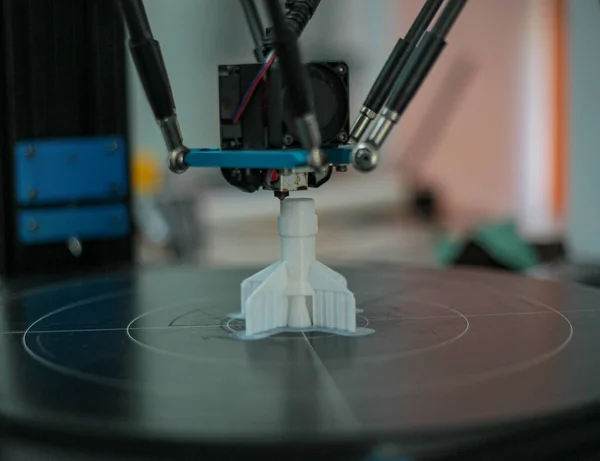
We all saw that all countries are interested in space and the interest is not limited globally, even locally to Saudi Arabia, we saw the enthusiasm that started from Prince Sultan Al Saud, who was the first Arab astronaut in 1405 AH (1984 AD), to astronauts Ali Al-Qarni, and Rayana Barnawi, the first Saudi astronaut, who proudly participated in a scientific space flight in 2023.
Astronauts Ali Al-Qarni and Rayana Barnawi
But you know that this interest is not only scientific, these days scientists around the world are preoccupied with the idea of colonialism, not here in our land, but in space!
Additive space technologies are key in this exploration.
Many space science projects have been launched to discover a way to localize other planets and make them suitable for real humans living in outer space. All eyes are on three-dimensional printing because it is cost-effective, adaptable, and uses all available materials to make really useful things — even 3D printed space shuttles.
It is indeed an idea that someone passed by him when he was young, and what would happen if we went to the moon to live in it? Can we get closer to our fantasies and see in this article the latest discoveries that have become, what the houses there look like, and how we live among the stars?
Astronauts Are Used To
NASA says they've been using it for at least 10 years to make their tools and spare parts. The good news is that astronauts can recycle their plastic waste in space into raw materials for the printer, reducing the limitations of 3D printing in space missions. This approach ensures a more sustainable way to produce the necessary equipment.
NASA astronaut Barry Wilmore holds a wrench created in 2014 using a 3D printer aboard the International Space Station using a design file sent from Earth. Photo credits (NASA)
NASA has a Plan!
NASA has collaborated with the famous 3D printing company ICON, with a major project to explore the possibility of building humanized habitats on other planets using 3D printing in space exploration. This includes using 3D printer stations that can construct entire buildings. The project began with a competition NASA holds each year called the "3D Printed Housing Challenge," in which participants imagine the architecture of potential homes printed in space and how these dwellings can support life on a planet different from Earth.
How many years ago, a strange project called "MARSHA" won, whose architectural concept is based on a conical structure and suggested that its place be on Mars because the soil of Mars is suitable for its proximity to the soil of the Earth, and thus they only need to transport the printer only, which digs and collects materials, prints and equips the dwelling, and all that the pioneers have to do is supervise the process.
Photo courtesy "AI space factory"
Of course, every astronaut needs a suit made specifically for the planet he is exploring, and for this reason, Mars One has created a printed space suit using three-dimensional printing techniques, this suit adapts perfectly to astronauts and ensures their survival on Mars with the help of God Almighty and cutting-edge 3D printing technologies, possibly even incorporating metal 3D filament.
New Space Manufacturing Materials
In the industrial field, the aircraft industry is characterized by its extensive use of 3D printing technology and is always exploring new materials and innovative alternatives to traditional materials such as titanium and aluminum. These days, the new "lunar rich" material has occupied the forefront of 3D printing, specifically designed for additive manufacturing in space. Lunar regolith is a type of dirt covering the moon, and NASA has demonstrated its utility in printing 3D models.
"Lunar riches are similar to concrete," said Advinet Macaya, an industrial engineer at NASA, which NASA used to produce small practical parts such as screws and gears that have proven to be particularly solid and useful on lunar flights.
Astronaut collects a sample of lunar treasure (source)
When do we dwell in space?
With the advancement of 3D printing, we have witnessed many successful projects between us and in our lands from a house made in me to the first 3D printed mosque in Jeddah. This leads us to think about the possibility of using this technology in the near or distant future to build habitable buildings in space. Of course, we all know that living in space is not practical, but these houses on the moon are very useful for astronauts on their missions. Even the European Space Foundation (ESA) aims to build a dome on the moon using lunar riches, which they use to create walls or bricks that protect astronauts from radiation.
These efforts, including those of SpaceX 3D printing innovations, represent important steps toward building three-dimensional printed dwellings directly on the Moon and Mars, which ultimately paves the way for human colonization of space.










